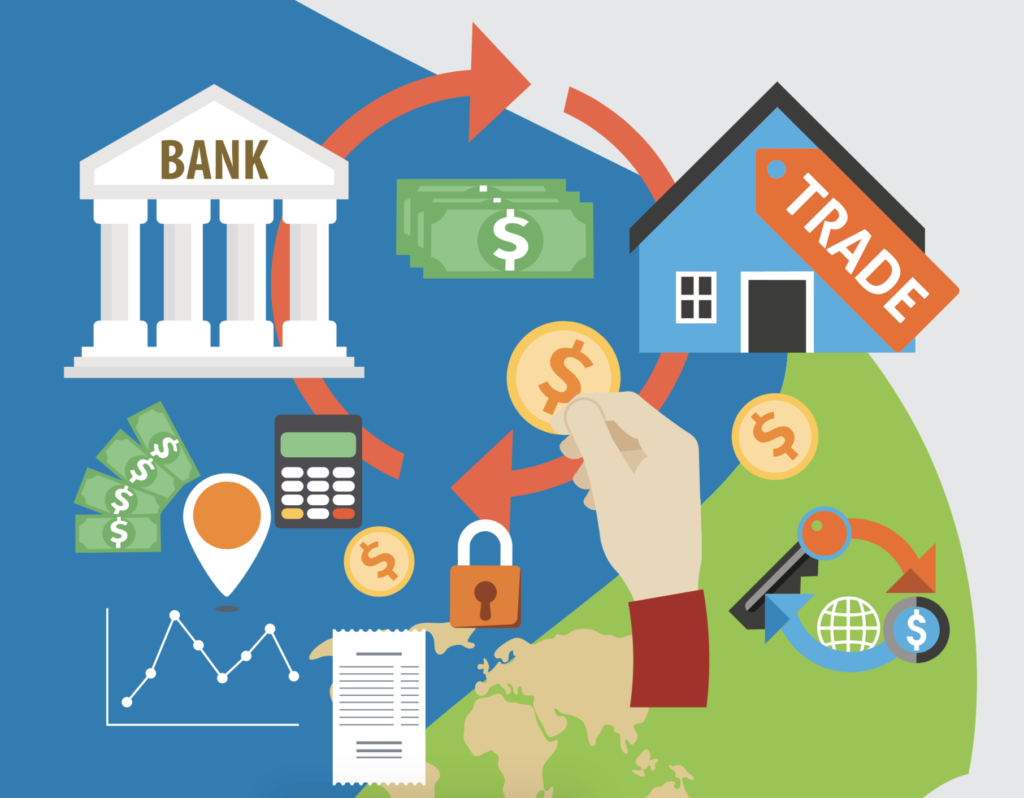Digital transformation has shifted from a strategic choice to a business imperative. As we approach mid‑decade, digital banking is redefining the fundamentals of finance: convenience, personalization, inclusion, and security.
Table of Contents
ToggleConsequently, fintech and traditional banks alike are increasingly doubling down on innovation. This article examines the most significant trends shaping the future of digital banking, the substantial benefits it offers, and the key technologies driving this revolution.
Leading Digital Banking Trends

Digital-Only Banks
Firstly, the rise of neobanks—mobile-first, full digital institutions—is reshaping the competitive landscape. According to European data, neobanks continue to gain ground due to supportive regulation (PSD2), innovation, and customer demand for seamless experiences.
Fintech Integration & Banking-as-a-Service
Moreover, embedded finance and Banking‑as‑a‑Service (BaaS) models enable platforms to integrate banking directly into their ecosystems. Global consulting groups report accelerated fintech revenue growth—21% year over year—far outpacing traditional banks at just 6% growth. Meanwhile, open ecosystems and scalable infrastructure are key competitive advantages.
Human-Centric Digital Experience
Importantly, digital banking experiences are evolving beyond transactions. Forrester notes that customer interfaces are “increasingly humanlike, connected, and empowering”—driven by the incorporation of generative AI into mobile and web journeys. Thus, banks are bringing emotional intelligence back into digital interactions.
Sophisticated AI & Invisible Banking
Additionally, AI is quietly powering everything. From invisible payments to anticipatory insights, 60% of banks are expected to implement generative AI solutions within the coming years. Consequently, digital banking platforms now use AI for fraud detection, simplified experiences, and context-aware financial guidance.
Digital Wallets & Real-Time Payments
Simultaneously, real-time payment networks like India’s UPI demonstrate the power of digital banking platforms. UPI processed a record high volume—18.7 billion transactions worth ₹25 lakh crore in a single month. With over 673 live banks on the platform, UPI is a cornerstone of India’s digital banking ecosystem.
Open Banking & Open Finance Expansion
Furthermore, open banking frameworks (PSD2, GDPR) have spurred innovation in Europe and the UK. As these evolve into open finance, banks will share data across investments, pensions, and insurance, building more integrated financial ecosystems.
Green & Inclusive Digital Banking
Alongside technology, sustainability and inclusion are becoming core priorities. Inclusive finance platforms have extended access for excluded populations—women, rural users—while ESG-friendly offerings foster trust and brand loyalty. Concurrently, digital banking firms in the UK are expanding services for neurodiverse and vulnerable groups via branch-community hubs.
Cybersecurity & Regulatory Resilience
Finally, digital growth demands security. A comprehensive review of current research confirms that phishing and malware are top threats. In response, banks are embracing multi-factor authentication, biometric verification, AI-based fraud detection, and blockchain—meeting regulatory standards like PSD2 and GDPR.
Benefits Driving Adoption of Digital Banking
Unmatched Convenience
Digital banking gives users 24/7 access to payments, audits, and analytics—all via mobile and web platforms. In the U.S., 80% of millennials prefer digital channels, while mobile is the go‑to for Gen Z (64%).
Enhanced Personalization & Financial Literacy
Modern banking leverages data-driven insights—AI-driven budgeting tools, dashboards, and alerts—to empower users. Notably, 59% of people want digital platforms to include user-friendly money-management tools.
Cost Efficiency & Profitability
As noted earlier, fintechs are growing revenue by 21%, with 69% achieving profitability—outpacing legacy banks. Digital transformation also reduces operational costs, enabling better rates and low‑fee offerings, particularly among digital‑only banks.
Financial Inclusion at Scale
The UPI platform exemplifies scaling inclusion: nearly 17 billion monthly transactions via 673 banks. On a global scale, digital banking bridges gaps—especially among women and low-income users .
Resilience & Risk Reduction
Additionally, centralized digital infrastructures help banks proactively combat fraud and outages. Layered defenses above and beyond traditional firewalls support trust and resilience.
Key Technology Pillars of Digital Banking
AI, ML & Generative AI
Banks use machine learning for predictive analytics, customer segmentation, and fraud prevention. Generative AI is now also being applied to personalize interfaces and autoscale development by rewriting legacy code (arxiv.org, accenture.com).
Real-Time Payment Infrastructure
UPI and similar systems—like Sri Lanka’s GovPay (launched Feb 7, 2025) (en.wikipedia.org)—showcase how governments and banks can co-create fast, secure, real-time payment rails.
Cloud-Native & Open-Source Frameworks
Open-source and cloud-native stacks (e.g. Linux, Kubernetes) are modernizing core banking systems, improving flexibility, reducing costs, and enabling rapid integration (accenture.com).
API-First & BaaS Platforms
APIs lie at the heart of digital banking ecosystems. They support open banking mandates and enable fintechs to offer embedded services, creating win-win partnerships .
Digital Identity & Biometric Security
Mobile-first onboarding with biometrics (face, fingerprint) ensures both user convenience and compliance with global standards like KYC and AML.
Cybersecurity & Compliance Technologies
Effective cybersecurity combines MFA, AI-based monitoring, blockchain-backed ledgers, and secure enclaves. Regulatory frameworks guide implementations to maintain trust .
Also Read: Composable Enterprises: Unlocking Agility thorugh business and technical modularity
Real-World Examples and Use Cases
UPI in India: Massive Scale
This platform handled a record 18.7 billion transactions (₹25 lakh crore) in a single month, supported by 673 member banks (npci.org.in). Such scalable systems illustrate the true power of digital banking platforms.
GovPay in Sri Lanka
Launched in early 2025, the platform centralizes government payments—simplifying processes and enhancing transparency .
Digital-Only Banking in the UK
Rising satisfaction and adoption—40% of consumers now use digital-only banks like Monzo, Revolut, and Starling—underscores the shift toward agile, customer-friendly platforms (learn.g2.com).
Community-Focused Hybrid Branches
Conversely, UK banks such as Santander and Nationwide are reshaping branches into multi-use spaces—helping customers, including those facing digital literacy challenges (ft.com).
Fintech vs. Traditional Banks
Boston Consulting Group reports that digital-first challengers continue to erode traditional bank market share across retail, trading, and lending domains (economictimes.indiatimes.com).
Challenges Ahead
Escalating Cyber Threats
Although digital banking delivers new benefits, it also faces persistent phishing and malware attacks. As such, constant vigilance through MFA, AI, and blockchain is essential .
Regulatory Overlay
Varying frameworks—PSD2, FIDA, open finance mandates—mean banks must navigate a patchwork of rules. Meeting compliance and data protection needs is non-negotiable .
Digital Divide & Inclusion
Despite rapid digitization, population groups (seniors, rural residents) require thoughtful onboarding, education, and hybrid services with human support .
Ethical Use of Data & AI
Banks must balance personalization with transparency. Responsible AI deployment and strict data governance policies are critical to maintaining user trust .
Strategic Playbook for Banks
Build an AI-First Infrastructure: Prioritize generative AI for interfaces, fraud detection, and automation.
Embrace Real-Time, API-Driven Platforms: Follow UPI’s model and launch BaaS programs.
Modernize with Cloud and Open-Source: Replace legacy systems with scalable architectures.
Invest in Cyber Defense: Combine biometric authentication, AI monitoring, and blockchain security.
Advance Inclusion: Deploy physical/hybrid support in underserved segments.
Commit to ESG Goals: Provide green loans and accessible services.
Engage with Open Finance: Prepare for data-sharing ecosystems via PSD3 and FIDA compliance.
What’s Next in Digital Banking?
Embedded & Invisible Finance
Financial services will become seamlessly embedded into everyday life—cars, wearables, voice assistants—driven by generative AI and real-time payment networks (en.wikipedia.org).
CBDCs & Tokenized Assets
Government-backed digital currencies and blockchain-based assets will revolutionize cross-border remittances, fundraising, and capital market access—driving a new wave in digital banking.
Sustainability at Core
ESG and financial inclusion strategies will no longer be optional—they’ll define brand trustworthiness and competitive positioning.
Conclusion
In short, the future of digital banking hinges on human-centered, inclusive design built on real-time, AI-enabled, secure platforms. As fintechs grow revenue faster, traditional banks must innovate or partner to stay relevant.
Successful banks will be those that marry technology with ethical data practices, digital inclusion, and forward‑leaning ESG commitments.
The next era of finance will belong to institutions that embed empathy into electron‑driven interactions—and champion the digital journey for every customer.
